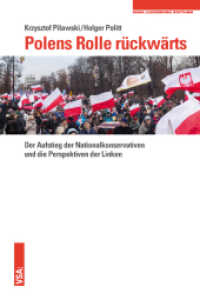Full Description
At the turn of the twentieth century, colleges and universities in the U.S. (and in many other places) were convulsed with change, a change induced by the creation of the modern set of academic disciplines. Their emergence at that time fundamentally altered how universities were constructed and how they did their business. It is the model on which the academy of the twenty-first century operates. Very shortly after the creation of the disciplinary-based academy, pressures began to build, both in the academy and in the society that looked to the academy to help solve pressing social problems, to develop interdisciplinary approaches to address problems that fit poorly within the disciplinary structure. These external and internal forces never fully abated, but peaked in the aftermath of the Second World War (and especially at the rise of a bipolar international system) and peaked again more recently. The contemporary college and university is therefore a rich amalgam of disciplinary and interdisciplinary units, problems, approaches, and structures.
Interdisciplinarity examines the contemporary academy from this mixture of its disciplinary-based structure and its burgeoning interdisciplinary focuses. Part I looks at the value of the disciplinary structure in the contemporary university alongside the motivations that lead to calls for greater interdisciplinary approaches. Part 2 traces the development of external forces, particularly the private and public foundation, that shaped the development of interdisciplinary scholarship in the twentieth century. The final two sections examine in detail interdisciplinary teaching and learnings and the organization of university-based interdisciplinary research.
Contents
Foreword ; Chapter 1: Introduction ; Section I: The Value of a Discipline: Motivations for Interdisciplinarity ; Chapter 2: The Value of a Discipline ; Chapter 3: An Essay on the Relationship between Disciplines and Interdisciplinarity ; Chapter 4: Scholarly Motivations for Interdisciplinarity: Four Leaders in Interdisciplinary Social Science Reflect on Their Times ; Section II: Private and Public Foundations and their Role in Establishing Major and often Lasting Interdisciplinary Projects ; Chapter 5: " Private Foundations and the Early Focus on Interdisciplinary Research ; Chapter 6: The Second Half of the Twentieth Century: From Foundations to Federal Funds ; Chapter 7: The Late Twentieth and Early Twenty-First Centuries: Government Support for Interdisciplinarity ; Chapter 8: Interdisciplinary Initiatives at the Beginning of the 21st Century, Or, Institutions Designed to Foster Interdisciplinary Research ; Section III: Interdisciplinary Teaching and Learning ; Chapter 9: Interdisciplinarity and Undergraduate Teaching and Learning ; Chapter 10: Interdisciplinarity: Teaching Methodology and Graduate Teaching and Learning ; Section IV: The Organization of Interdisciplinary Research in the Academy ; Chapter 11: The Pitfalls and Promises of Creating Interdisciplinary Research Organizations on Campus ; Chapter 12: How Centers Succeed: The Interdisciplinary Center and its Administration ; Chapter 13: Interdisciplinary Centers: When and When Not to Choose Them ; References








